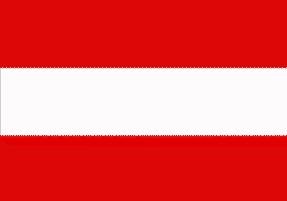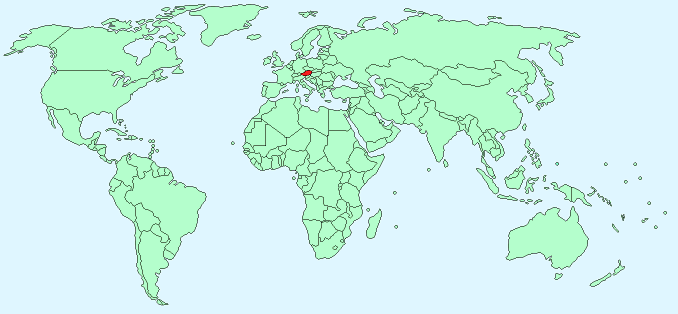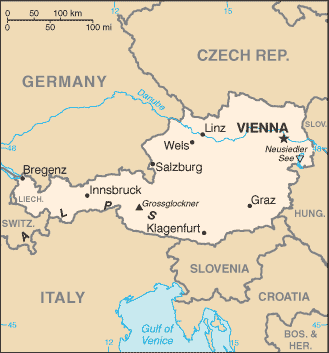Austria


Continent – Europe
Region – Western Europe
Size – 83,870 km²
Geography – South & west mountainous (Alps) north & east flat
Language – German, Turkish, Serbian
Religion – 73.6% Roman Catholic, 4.7% Protestant, 12% no religion, 4.2% Islam, other religions
Monetary Unit – Euro
Natural Resources – oil, coal, lignite, timber, iron ore, copper, zinc, antimony, magnesite, tungsten, graphite, salt
Agriculture – grains, potatoes, sugar beets, wine, fruit; dairy products, cattle, pigs, poultry; lumber
Industry – construction, machinery, vehicles and parts, food, metals, chemicals, lumber and wood processing, paper and paperboard, communications equipment, tourism

Neighbouring Countries – Germany, Czech Republic, Slovakia, Hungary, Slovenia, Italy, Switzerland
Population – 8,223,062 (2014)
Population Growth Rate – 0.1%
Average Life Expectancy – 79.2
Capital City – Vienna (population 1.794.770)
Highest Mountain – Grossglockner (3,798 m)
Longest River – Danube (350 km – in Austria)
Climate – Warm summers 13°C to 26°C and cold, wet, snowy winters -7°C to 11°C
Yearly Rainfall – 85 cm approx
Plant Life – 44% forest – beech, birch, oak, fir, larch, pine, alpine plants – edelweiss, gentian, alpine carnation, arnica, alpine rose, heather
Animal Life – chamois (rare), deer, hare, fox, badger, marten, rabbit
Bird Life – Alpine chough, grouse, marmot, partridge, pheasant, purple heron, spoonbill, avocet
Harvard Reference for this page:
Heather Y Wheeler. (2015). Austria. Available: https://www.naturalhistoryonthenet.com/Facts_Figures/Country_Facts/austria.htm. Last accessed Monday, July 18, 2016
Facts and Figures Pages
